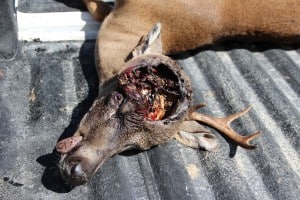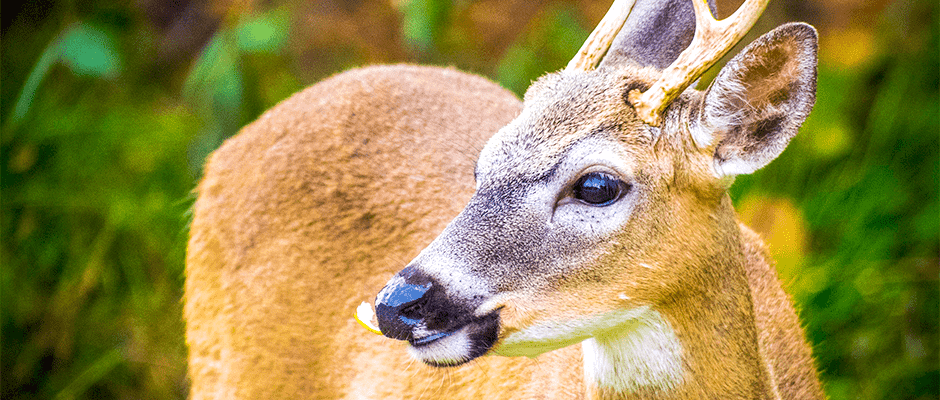Share this article
Flesh-eating maggots threaten endangered Key deer
Endangered deer in the Florida Keys are suffering grizzly deaths from an infestation of flesh-eating maggots. The parasites, known as New World screwworms (Cochliomyia hominivorax), are the larvae of flies that lay their eggs in open wounds. They can infect humans, pets and livestock, but so far, the main victims have been deer from an endangered white-tailed deer subspecies known as the Key deer (Odocoileus virginianus clavium). Key deer are the smallest deer in North America, with an average shoulder height of 26-27 inches. They nearly went extinct in the mid-20th century, but recovery efforts have raised their population to about 1,000 individuals, all found on the Lower Keys in Florida.

A Key deer lies dead in the National Key Deer Refuge, the top of its head eaten away by screwworms. ©USFWS
Screwworms probably began killing the deer last summer, although managers didn’t immediately realize what was happening. The United States hasn’t had a screwworm infestation in more than 30 years, according to the Florida Department of Agriculture and Consumer Services. Now, an estimated 76 Key deer have died in the outbreak, says Kristie Killam, a ranger at the National Key Deer Refuge in Big Pine Key, Fl. Bucks are especially at risk now during the rutting season, since they are fighting and receiving wounds that screwworms can infect, CNN reports.
Screwworm is treatable if caught early, as often happens with humans and pets, but it can be disastrous for livestock operations. Officials have declared an agricultural state of emergency, and the Florida Department of Agriculture and Consumer Services has set up an animal screening checkpoint to prevent the infestation from spreading into the rest of Florida.
Meanwhile, managers from state and federal agencies are trying to quash the infestation using a tried-and-true method: releasing masses of sterilized male flies. The technique successfully eradicated screwworms from North America in the 20th century, and managers have continued to use it to maintain a barrier zone in Panama. Wildlife managers released sterilized flies into the Lower Keys on Oct. 11.
“They’re out there, hopefully looking for girlfriends,” said Killam.
Header Image: A male Key deer stands in Big Pine Key in Florida. The endangered subspecies is in the midst of a deadly screwworm infestation. ©Thomas








